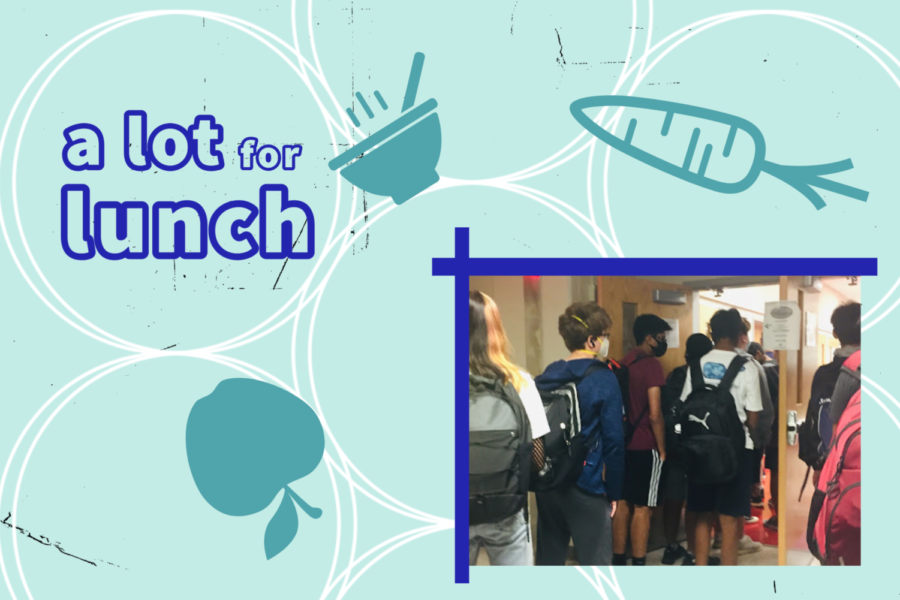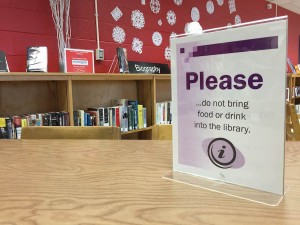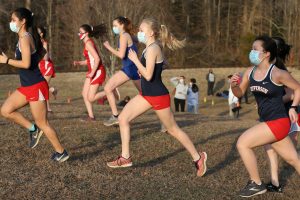Lunches and seating: free, for now
Free lunches mixed with the return of students to in person learning produce a lunch line with wait times as long as 15 minutes. “It can get really bad at times. If you aren’t quick enough, you’ll be stuck behind easily 100 students,” sophomore Pishoy Elias said. Photo by Robert Stotz.
September 13, 2021
As the new school year begins, there are a lot of things to get used to. Lunches, in particular, have seen some of the biggest reworks in comparison to last year: lunches served at the cafeteria are free, and all students eat lunch at the same time. While these elements will take some getting used to, there’s a chance you may not have to: a schedule for two lunch shifts is ready to go should COVID-19 strike Jefferson’s student body.
Jefferson principal Dr. Ann Bonitatibus has been at the forefront of discussion regarding lunches at Jefferson. With a direction in mind for free lunches, Jefferson has seen a larger presence in the cafeteria lines over the first few weeks of school compared to any previous year.
“The goal of free lunches was to alleviate any stress, either financial or scheduling, that families may face while recovering from the pandemic. In a normal year, we would give out 400 or so lunches, and now we’re serving over double that,” Bonitatibus said.
This increase of nearly 400 lunches shows that students have a clear incentive to get food from the cafeteira. Pishoy Elias, a sophomore who returned in person at the end of last year, has experienced firsthand how “buying” lunch, rather than packing it, can make things easier.
“In my opinion it was really a really good decision on the county’s part to make our lunches free. I definitely made use of it for the majority of last year when I could. Not having to worry about what I would pack the next morning was a nice relief,” Elias said.
To some, the incentive of a free meal is all it takes. Despite having a wait time of around 15 minutes for anyone late to the line, cafeteria lunches are popular even among those who pack their lunch.
“I’ve noticed that, regardless of whether they bring lunch from home, many of my friends will get a free lunch. Having that kind of opportunity where anyone can take advantage of it definitely makes things painless,” Elias said.
Another change from last year, which is actually a return to the policy in place before COVID-19, is having a single lunch block for every student. Cynthia Hawkins, the assistant principal for the class of 2022, sees the collective lunch period as a way of making and socializing with friends.
“Students don’t have to worry about having a different lunch period [to] their peers. You can meet up with anyone on any day of the week, which is something that makes [Jefferson] special,” Hawkins said.
While the one lunch period is a normal part of a Jefferson schedule, this year it is considered a privilege. Students must do their part by following COVID-19 protocols, else they jeopardize not only this one-block system but also their own personal safety.
“The main idea behind reintroducing the old [Jefferson] lunch system was that students would hold up their end of things and wear their masks whenever possible,” Hawkins said.
For Dr. Bonitatibus, it all comes down to safety. If it becomes apparent that a schedule shift is necessary to sufficiently distance during lunchtime, the change will be made.
“Every day, we think about [switching to two lunch blocks]. We actually have a schedule in our pocket so that, if I have to announce to teachers and students that we need to split lunch shifts, we’ll be ready to go,” Bonitatibus said.
While not an ideal outcome, such a change would be necessary in the unfortunate event of a severe COVID-19 outbreak among Jefferson students. In Bonitatibus’ eyes, changes to when and where students eat are not the primary concerns given the amount of disruption that these cases could cause.
“We’re monitoring any kind of COVID exposure very carefully. [Students and staff] hear me say it on the morning announcements: I am concerned because I don’t believe we’re doing as good a job as we could be with distancing at lunchtime,” Bonitatibus said.
Even with such a focus on student safety, there are some factors that can’t be controlled. Precipitation, for one, can force students out of any outdoor seating spaces, namely the Nobel and greenhouse courtyards. With these two regularly populated areas potentially off the table, the relocated students must find room within the school to eat.
“For inclement weather days, we must have all 1900 students in the building at one time,” Bonitatibus said. “That honestly scares me, because I don’t know if we have enough interior space to reasonably spread out.”
Bonitatibus wanted to begin the year with a system that both teachers and upperclassmen were familiar with. Although it may not last, she and the other members of the Jefferson administration team are doing what they can to make the Jefferson experience as normal as possible.
“I am hopeful that I won’t get a lot of backlash if we do end up making the switch. People might not be happy, but at least [students] know that we tried our best. But sometimes our best just isn’t even possible,” Bonitatibus said.









![A group of juniors play “Clash Royale” on their phones during lunch. Lunch is the only time when phones are allowed to be out. “I think once we adapt to it, it's not going to be something we miss because [for] everyone moving forward, that'll have been the policy [since] middle school,” DNA science and biology teacher Aubrie Holman said.](https://www.tjtoday.org/wp-content/uploads/2025/09/IMG_6621-2-e1758016994220-300x239.jpeg)